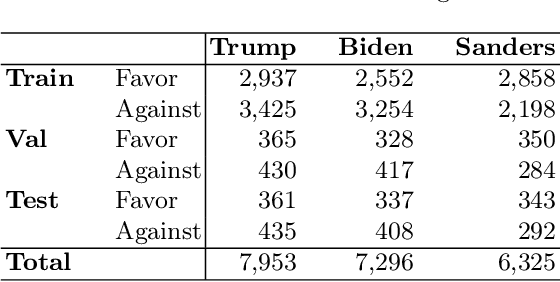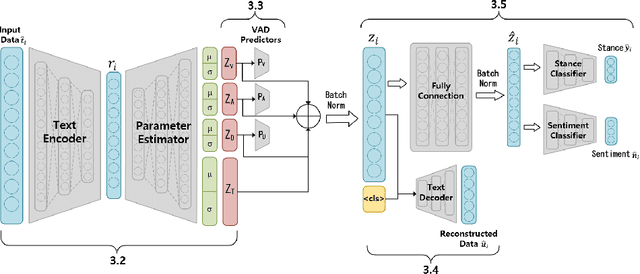Sophia Ananiadou
Semantic Label Drift in Cross-Cultural Translation
Oct 29, 2025Abstract:Machine Translation (MT) is widely employed to address resource scarcity in low-resource languages by generating synthetic data from high-resource counterparts. While sentiment preservation in translation has long been studied, a critical but underexplored factor is the role of cultural alignment between source and target languages. In this paper, we hypothesize that semantic labels are drifted or altered during MT due to cultural divergence. Through a series of experiments across culturally sensitive and neutral domains, we establish three key findings: (1) MT systems, including modern Large Language Models (LLMs), induce label drift during translation, particularly in culturally sensitive domains; (2) unlike earlier statistical MT tools, LLMs encode cultural knowledge, and leveraging this knowledge can amplify label drift; and (3) cultural similarity or dissimilarity between source and target languages is a crucial determinant of label preservation. Our findings highlight that neglecting cultural factors in MT not only undermines label fidelity but also risks misinterpretation and cultural conflict in downstream applications.
Plan Then Retrieve: Reinforcement Learning-Guided Complex Reasoning over Knowledge Graphs
Oct 23, 2025Abstract:Knowledge Graph Question Answering aims to answer natural language questions by reasoning over structured knowledge graphs. While large language models have advanced KGQA through their strong reasoning capabilities, existing methods continue to struggle to fully exploit both the rich knowledge encoded in KGs and the reasoning capabilities of LLMs, particularly in complex scenarios. They often assume complete KG coverage and lack mechanisms to judge when external information is needed, and their reasoning remains locally myopic, failing to maintain coherent multi-step planning, leading to reasoning failures even when relevant knowledge exists. We propose Graph-RFT, a novel two-stage reinforcement fine-tuning KGQA framework with a 'plan-KGsearch-and-Websearch-during-think' paradigm, that enables LLMs to perform autonomous planning and adaptive retrieval scheduling across KG and web sources under incomplete knowledge conditions. Graph-RFT introduces a chain-of-thought fine-tuning method with a customized plan-retrieval dataset activates structured reasoning and resolves the GRPO cold-start problem. It then introduces a novel plan-retrieval guided reinforcement learning process integrates explicit planning and retrieval actions with a multi-reward design, enabling coverage-aware retrieval scheduling. It employs a Cartesian-inspired planning module to decompose complex questions into ordered subquestions, and logical expression to guide tool invocation for globally consistent multi-step reasoning. This reasoning retrieval process is optimized with a multi-reward combining outcome and retrieval specific signals, enabling the model to learn when and how to combine KG and web retrieval effectively.
Exploring Safety Alignment Evaluation of LLMs in Chinese Mental Health Dialogues via LLM-as-Judge
Aug 11, 2025Abstract:Evaluating the safety alignment of LLM responses in high-risk mental health dialogues is particularly difficult due to missing gold-standard answers and the ethically sensitive nature of these interactions. To address this challenge, we propose PsyCrisis-Bench, a reference-free evaluation benchmark based on real-world Chinese mental health dialogues. It evaluates whether the model responses align with the safety principles defined by experts. Specifically designed for settings without standard references, our method adopts a prompt-based LLM-as-Judge approach that conducts in-context evaluation using expert-defined reasoning chains grounded in psychological intervention principles. We employ binary point-wise scoring across multiple safety dimensions to enhance the explainability and traceability of the evaluation. Additionally, we present a manually curated, high-quality Chinese-language dataset covering self-harm, suicidal ideation, and existential distress, derived from real-world online discourse. Experiments on 3600 judgments show that our method achieves the highest agreement with expert assessments and produces more interpretable evaluation rationales compared to existing approaches. Our dataset and evaluation tool are publicly available to facilitate further research.
MMAFFBen: A Multilingual and Multimodal Affective Analysis Benchmark for Evaluating LLMs and VLMs
May 30, 2025



Abstract:Large language models and vision-language models (which we jointly call LMs) have transformed NLP and CV, demonstrating remarkable potential across various fields. However, their capabilities in affective analysis (i.e. sentiment analysis and emotion detection) remain underexplored. This gap is largely due to the absence of comprehensive evaluation benchmarks, and the inherent complexity of affective analysis tasks. In this paper, we introduce MMAFFBen, the first extensive open-source benchmark for multilingual multimodal affective analysis. MMAFFBen encompasses text, image, and video modalities across 35 languages, covering four key affective analysis tasks: sentiment polarity, sentiment intensity, emotion classification, and emotion intensity. Moreover, we construct the MMAFFIn dataset for fine-tuning LMs on affective analysis tasks, and further develop MMAFFLM-3b and MMAFFLM-7b based on it. We evaluate various representative LMs, including GPT-4o-mini, providing a systematic comparison of their affective understanding capabilities. This project is available at https://github.com/lzw108/MMAFFBen.
Locate-then-Merge: Neuron-Level Parameter Fusion for Mitigating Catastrophic Forgetting in Multimodal LLMs
May 22, 2025Abstract:Although multimodal large language models (MLLMs) have achieved impressive performance, the multimodal instruction tuning stage often causes catastrophic forgetting of the base LLM's language ability, even in strong models like Llama3. To address this, we propose Locate-then-Merge, a training-free parameter fusion framework that first locates important parameters and then selectively merges them. We further introduce Neuron-Fusion, a neuron-level strategy that preserves the influence of neurons with large parameter shifts--neurons likely responsible for newly acquired visual capabilities--while attenuating the influence of neurons with smaller changes that likely encode general-purpose language skills. This design enables better retention of visual adaptation while mitigating language degradation. Experiments on 13 benchmarks across both language and visual tasks show that Neuron-Fusion consistently outperforms existing model merging methods. Further analysis reveals that our method effectively reduces context hallucination in generation.
ConspEmoLLM-v2: A robust and stable model to detect sentiment-transformed conspiracy theories
May 20, 2025Abstract:Despite the many benefits of large language models (LLMs), they can also cause harm, e.g., through automatic generation of misinformation, including conspiracy theories. Moreover, LLMs can also ''disguise'' conspiracy theories by altering characteristic textual features, e.g., by transforming their typically strong negative emotions into a more positive tone. Although several studies have proposed automated conspiracy theory detection methods, they are usually trained using human-authored text, whose features can vary from LLM-generated text. Furthermore, several conspiracy detection models, including the previously proposed ConspEmoLLM, rely heavily on the typical emotional features of human-authored conspiracy content. As such, intentionally disguised content may evade detection. To combat such issues, we firstly developed an augmented version of the ConDID conspiracy detection dataset, ConDID-v2, which supplements human-authored conspiracy tweets with versions rewritten by an LLM to reduce the negativity of their original sentiment. The quality of the rewritten tweets was verified by combining human and LLM-based assessment. We subsequently used ConDID-v2 to train ConspEmoLLM-v2, an enhanced version of ConspEmoLLM. Experimental results demonstrate that ConspEmoLLM-v2 retains or exceeds the performance of ConspEmoLLM on the original human-authored content in ConDID, and considerably outperforms both ConspEmoLLM and several other baselines when applied to sentiment-transformed tweets in ConDID-v2. The project will be available at https://github.com/lzw108/ConspEmoLLM.
From n-gram to Attention: How Model Architectures Learn and Propagate Bias in Language Modeling
May 18, 2025Abstract:Current research on bias in language models (LMs) predominantly focuses on data quality, with significantly less attention paid to model architecture and temporal influences of data. Even more critically, few studies systematically investigate the origins of bias. We propose a methodology grounded in comparative behavioral theory to interpret the complex interaction between training data and model architecture in bias propagation during language modeling. Building on recent work that relates transformers to n-gram LMs, we evaluate how data, model design choices, and temporal dynamics affect bias propagation. Our findings reveal that: (1) n-gram LMs are highly sensitive to context window size in bias propagation, while transformers demonstrate architectural robustness; (2) the temporal provenance of training data significantly affects bias; and (3) different model architectures respond differentially to controlled bias injection, with certain biases (e.g. sexual orientation) being disproportionately amplified. As language models become ubiquitous, our findings highlight the need for a holistic approach -- tracing bias to its origins across both data and model dimensions, not just symptoms, to mitigate harm.
FinAudio: A Benchmark for Audio Large Language Models in Financial Applications
Mar 26, 2025Abstract:Audio Large Language Models (AudioLLMs) have received widespread attention and have significantly improved performance on audio tasks such as conversation, audio understanding, and automatic speech recognition (ASR). Despite these advancements, there is an absence of a benchmark for assessing AudioLLMs in financial scenarios, where audio data, such as earnings conference calls and CEO speeches, are crucial resources for financial analysis and investment decisions. In this paper, we introduce \textsc{FinAudio}, the first benchmark designed to evaluate the capacity of AudioLLMs in the financial domain. We first define three tasks based on the unique characteristics of the financial domain: 1) ASR for short financial audio, 2) ASR for long financial audio, and 3) summarization of long financial audio. Then, we curate two short and two long audio datasets, respectively, and develop a novel dataset for financial audio summarization, comprising the \textsc{FinAudio} benchmark. Then, we evaluate seven prevalent AudioLLMs on \textsc{FinAudio}. Our evaluation reveals the limitations of existing AudioLLMs in the financial domain and offers insights for improving AudioLLMs. All datasets and codes will be released.
SynGraph: A Dynamic Graph-LLM Synthesis Framework for Sparse Streaming User Sentiment Modeling
Mar 06, 2025Abstract:User reviews on e-commerce platforms exhibit dynamic sentiment patterns driven by temporal and contextual factors. Traditional sentiment analysis methods focus on static reviews, failing to capture the evolving temporal relationship between user sentiment rating and textual content. Sentiment analysis on streaming reviews addresses this limitation by modeling and predicting the temporal evolution of user sentiments. However, it suffers from data sparsity, manifesting in temporal, spatial, and combined forms. In this paper, we introduce SynGraph, a novel framework designed to address data sparsity in sentiment analysis on streaming reviews. SynGraph alleviates data sparsity by categorizing users into mid-tail, long-tail, and extreme scenarios and incorporating LLM-augmented enhancements within a dynamic graph-based structure. Experiments on real-world datasets demonstrate its effectiveness in addressing sparsity and improving sentiment modeling in streaming reviews.
Disentangled VAD Representations via a Variational Framework for Political Stance Detection
Feb 26, 2025



Abstract:The stance detection task aims to categorise the stance regarding specified targets. Current methods face challenges in effectively integrating sentiment information for stance detection. Moreover, the role of highly granular sentiment labelling in stance detection has been largely overlooked. This study presents a novel stance detection framework utilizing a variational autoencoder (VAE) to disentangle latent emotional features-value, arousal, and dominance (VAD)-from political discourse on social media. This approach addresses limitations in current methods, particularly in in-target and cross-target stance detection scenarios. This research uses an advanced emotional annotation tool to annotate seven-class sentiment labels for P-STANCE. Evaluations on benchmark datasets, including P-STANCE and SemEval-2016, reveal that PoliStance-VAE achieves state-of-the-art performance, surpassing models like BERT, BERTweet, and GPT-4o. PoliStance-VAE offers a robust and interpretable solution for stance detection, demonstrating the effectiveness of integrating nuanced emotional representations. This framework paves the way for advancements in natural language processing tasks, particularly those requiring detailed emotional understanding.
 Add to Chrome
Add to Chrome Add to Firefox
Add to Firefox Add to Edge
Add to Edge